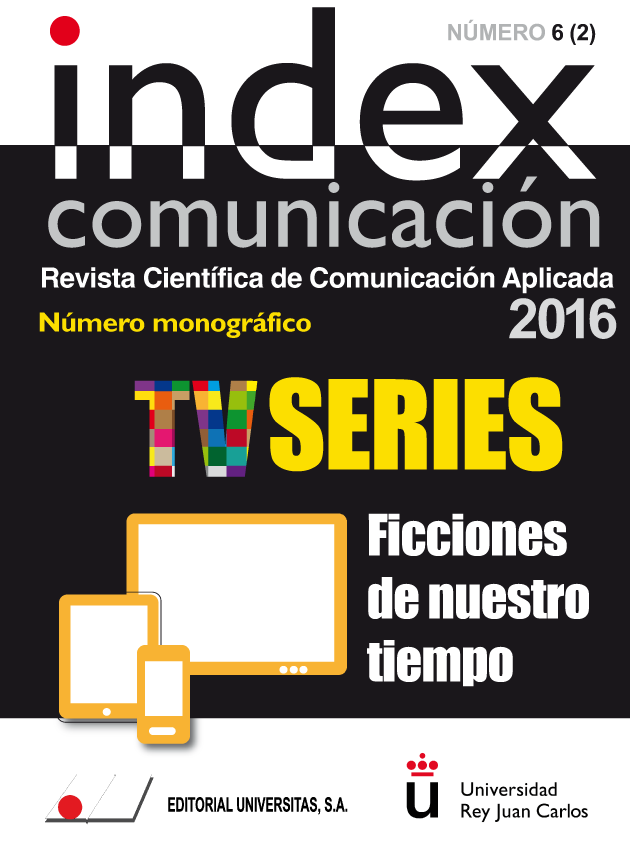The Role of the Prosumer in the Expansion of Transmedia Storytelling on TV Fiction Stories: the Case of ‘The Ministry of Time’
Keywords:
Fandom, Transmedia Storytelling, Fiction, Television, The Ministry of Time, ProsumersAbstract
This paper has the objective of demonstrate the important role of the prosumer in developing transmedia storytelling in fiction series for television. The contributions of this new type of consumers cannot be ignored. They should get the importance that they deserve, because their creations increase the visibility and brand value of the final product. For the realization of this article it will proceed to the case of study of the Spanish fiction serie The Ministry of Time. The fan phenomenon caused as a result of this serie has favored the creation of an enormous amount of transmedia content. This article shows that the contributions of the prosumers have the same importance than the official development of the series themeselves. They make it grow and become more complete, generating more engagement than series that only care about their monomedia development. They are a special group of consumers who producers have to care about, and listen to them. They are the biggest fans of these audiovisual products. And, in addition, they can increase or decrease the interest of a project of this nature.Metrics
References
Castellanos, Gema (2015) “Entrevista a Javier Olivares, productor y guionista de “El Ministerio del Tiempo”, “Isabel” (sic)…” Para informativos.net Youtube. Disponible en: https://www.youtube.com/watch?v=0TndrjBBzSw Min. 10:03.
Ceballos, Noel (2012) “El guion: conceptos básicos”, en Ríos San Martín, El guion para series de televisión, Madrid: Instituto RTVE.
Chávez Ordoñez, Verónica Itzel: ¿Qué pasa cuando los receptores crean? Expansión narrativa de una serie animada por medio de las creaciones de los fans. Revista Communication Papers, No 4, páginas 77 a 86. Departamento de Filología y Comunicación de la Universidad de Girona. Recuperado el 26 de marzo de 2015 de: http://www.communicationpapers.es
Dimaggio, Madeline (1990). Escribir para televisión. Cómo elaborar guiones y promocionarlos en las cadenas públicas y privadas. Barcelona: PAIDÓS.
Jenkins, Henry (2003). Transmedia storytelling. Moving characters from books to films to video games can make them stronger and more compelling, en Tecnology Review, 15 de enero. URL: http://www.technologyreview.com/news/401760/transmedia-storytelling/
Jenkins, Henry (2008). Convergence culture : La cultura de la convergencia de los medios de comunicación. Barcelona: Paidós Comunicación.
Jenkins, Henry (2010). Piratas de textos: Fans, Cultura Participativa y Televisión (Alicia Capel Tatjer, trad.). Barcelona: Paidós Comunicación. (Obra original publicada en 1992)
Jenkins, Henry (2014). Fans, bloqueros y videojuegos : La cultura de la colaboración (3ª reimpr. ed.). Barcelona: Paidós Comunicación.
McKee, Robert (2003). El guión. Barcelona: Alba Editorial.
Olivares, Javier (2015). Entrevista de los autores.
Pimentel, Aurelio (21/04/2015) “Ministéricos: radiografía de un fenómeno fan televisivo en la era de internet y las redes sociales”. Rtve.es. Disponible en: http://www.rtve.es/television/20150421/ministericos-radiografia-fenomeno-fan-televisivo-era-internet/1133040.shtml
RTVE (13/04/2015) El Ministerio del Tiempo -Capítulo 8- “La leyenda del tiempo”. Disponible en: http://www.rtve.es/alacarta/videos/el-ministerio-del-tiempo/emdt-108-mosca-120415/3086859/
Schaaff, Anaïs, Olivares, Javier y Olivares, Pablo (2015) “La leyenda del tiempo”. Guion. Disponible en: http://www.rtve.es/contenidos/ministeriotiempo/guion-capitulo-8.pdf.
Scolari, Carlos Alberto (2013): Narrativas transmedia : Cuando todos los medios cuentan. Barcelona: Deusto.
Toffler, Alvin (1985). La Tercera Ola. Volumen 1 (Adolfo Martín, trad.). Barcelona: Ediciones Orbis. (obra original publicada en 1980)
Truffaut, François (2003) El cine según Hitchcock, Madrid: Alianza Editorial.
Vila Fumás, Pere; Barceló Ugarte, Teresa y Fuentes Cortina, Gonzalo (2015). La televisión inteligente en el nuevo espacio televisivo. El espectador activo y los nuevos lenguajes. En Miquel Francés i Domènec, Germán Llorca Abad y Àlvar Peris Blanes (2015). La televisión conectada en el entorno transmedia (pp. 27-41). Pamplona: EUNSA – Ediciones de la Universidad de Navarra.
Vilches, Lorenzo (2013). Convergencia y transmedialidad. La ficción después de la TDT en Europa e Iberoamérica. Barcelona: Editorial Gedisa.
Downloads
Published
How to Cite
Issue
Section
License
Authors who submit to this journal agree to the following terms:
Authors retain copyright and ensure the magazine's right to be the first publication of the work as licensed under a Creative Commons Attribution-NoComercial 4.0 International License that allows others to share the work with an acknowledgment of authorship of the work and the initial publication in this magazine, with no commercial purpose.
Authors can establish separate additional agreements for non-exclusive distribution of the version of the work published in the magazine (for example, to an institutional repository or publish it in a book), with an acknowledgment of its initial publication in this journal.
It allows and authors are encouraged to disseminate their work electronically (eg, in institutional repositories or on their own website) prior to and during the submission process, as it can lead to productive exchanges, as well as a citation more early and most of the published work (See The Effect of Open Access).















